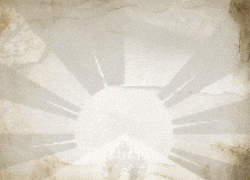By LEIGH MILLER
When you hear the word “Tibet,” the image that probably comes to mind is of an exotic and timeless Shangri-La: majestic mountains, yaks and peaceful people deep in Buddhist meditation.
This view is great for tourism, but real Tibetans live inside the People’s Republic of China. And not only did our friend’s family have electricity, the elaborately carved wooden cabinets in the living room housed not a Buddhist altar, but a large TV set, CD/ DVD players and speakers. It is not the readily available Hollywood schlock or Chinese kung fu flicks they prefer to watch, though; Tibetan horse races, music videos and DVDs of lamas performing Buddhist rituals were the favorites in the Kham province.
Kham, the southeastern region of Tibet located in China’s Sichuan province, is famed for producing boisterous “cowboys,” beautiful women, fearsome bandits and exalted spiritual masters. It’s a reputation that the province continues to embody at a time when the tentacles of global culture and consumerism reach deep into its heart.
In Tibet, the surge of modernity in the last 50 years has been compounded by the tumultuous political situation, with many Tibetans seeing themselves as being under colonial occupation by Communist China. The departure of Tibet’s spiritual leader, the Dalai Lama, to exile in India in 1959, the Cultural Revolution (1965-1976) and ongoing repression have left deep scars on individual and collective identities.
In the midst of politically enforced disintegration of traditional society and modern state discrimination against language, religion and customs, Tibetans feel pressured to either assimilate or go into exile.
Families split as children leave rural areas for education or, more likely, manual labor. Tibetans are routinely sent to prison for the offense of “splitting the Motherland,” such as possessing the Tibetan national flag or otherwise expressing support for Tibet’s independence. In Lhasa, Tibet’s capital city, Tibetans can be punished for possessing a photo of the Dalai Lama; monasteries operate under heavy restrictions and surveillance.
Kham’s more relaxed atmosphere, however, draws thousands to practice and study in the eastern region’s monasteries. Located along the single-lane Sichuan-Tibet Highway is the small town of Tawu, where we stayed with the relatives of an Atlanta-based monk from Drepung Loseling Monastery during our visit.
They welcomed us with hospitality reminiscent of my Jewish grandmothers, following the universal custom of overwhelming guests with copious servings of local delicacies: dried yak meat, homemade noodle soup, salted butter tea, roasted barley porridge and rootlike miniature sweet potatoes drenched in butter and sugar.
We spent three days exploring the town with the young men of the family, beginning with a treacherous drive in a huge construction truck up a tiny mountain path to hot springs. One member of the family cursed every Chinese migrant worker we passed.
Incongruously, however, interspersed between explanations about Tibetan tradition and angry condemnations of China were regret over Michael Jordan’s retirement from the basketball court and questions on why “Bush hasn’t killed Saddam.”
Following a sprightly grandmother and her 5-year-old grandson, we donated some money, lighted incense and recited prayers at the numerous altars in the local monastery. Religion’s role in Kham is not simply a holdover from a traditional identity associated with pre-1959 Tibet, but rather a living faith that permeates Tibetan lives as much as the availability of DVDs and SUVs.
Even after the crackdown on religion during the Cultural Revolution and the onslaught of modernization in the 1980s, Buddhist beliefs and institutions are thriving in Kham. Monasteries are being rebuilt, teachers are training disciples and hermits meditate in mountain caves despite Beijing’s heavy-handed crackdown.
Tibet is no Shangri-La, and its modernization makes neither Big Macs nor won-ton soup inevitable. Channeling resources and energy into Buddhist projects seems as essential to Tibetan society as roads and schools, with the key elements of the faith still relevant to Tibetans’ identity as individuals and as a ethnic group.
Leigh Miller is a Ph.D. student in the Graduate Institute of Liberal Arts at Emory University. She visited Tibet recently with her fiance, photographer Jason Sangster.









